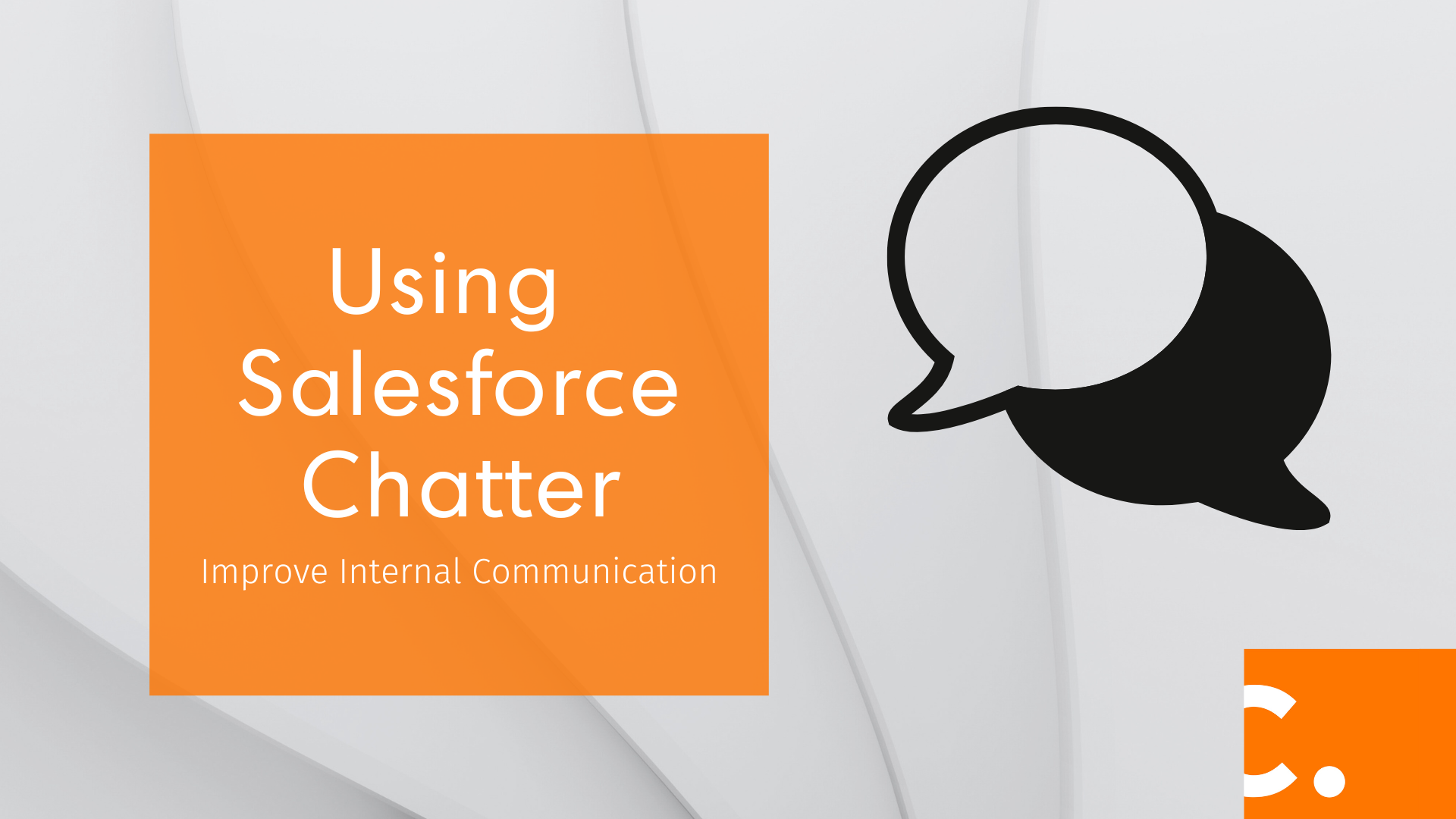
As someone who has been working in Salesforce for ten-plus years and has consulted and implemented Salesforce into many organizations, I thought I had a handle on Chatter. It often is made fun of, the “social media” of Salesforce, and until recently, I agreed with that. Boy, was I wrong. First, a little background on what Chatter (technically) is and how long it has been around.
Chatter was launched in private beta in February 2010 to 100 companies. After rave reviews, it was ultimately expanded to more than 5,000 customers due to overwhelming demand. With Chatter, employees and teams get immediate insight into their company’s programs, projects, people, customers, cases, documents, and business data that is pushed to them, delivering new levels of social intelligence.
Chatter can be used not only internally across a team/company, but also with external users such as Customers and Partners. This can be accomplished by inviting them to a private group. We see this as an underutilized feature.
When Concept is assisting companies in implementing Salesforce, Chatter was usually phase 2. That was a best practice; it is what we have always done. However, my mindset has changed. Recently, our vice president of operations and I worked to make Chatter a mainstay at our company, and it is proving to be a wise decision.
Using Salesforce Chatter and Its Features
Strategic Collaboration
If you are emailing a coworker, sending them a text message about a customer, prospect, case, contact, opportunity, you name it — you should send a Chatter post instead. Example: If you want to inquire about the status of a customer relationship, navigate to the account and "@mention" the owner of that account with your question. Once you @mention someone, an email is sent to them, and the post remains on the account. They can either reply to the email or log into Salesforce to respond to you. All of the collaborative information is recorded in Salesforce, not in someone’s email. If someone else takes over ownership of the account, they have all of the historical, internal communication.
Chatter is also a great place to boost morale by providing a way for coworkers to give shout-outs to each other. Our organization uses this platform to congratulate account owners on the opportunities they uncover and any closed-won deals that come from the leads they generate.
Chatter Topics
Topics are the hashtags of Chatter. Users can pull up any information related to a topic by simply adding the hashtag before the topic. They also give users the ability to search by topic and bring up all messages that are tagged with the same topic. I have instructed my team to use the hashtag, #competitivepricing, when they uncover a competitor’s pricing while speaking with a prospect. Topics allow me and others the ability to identify these posts quickly and group them for review.
Chatter users can also group internal messages by using hashtags. For example, if someone on an account wants to look up all messages related to that account. Just make sure you instruct all team members to use the hashtags when referencing specific accounts!
Groups
Groups are a great way to centrally locate internal (and external) communication. Groups can be public or private; they can be used with employees and co-workers and/or customers. Our organization uses groups in a variety of ways, but one of the most beneficial is group direction.
Like most companies, we have different subsets of groups within the organization. These groups range from our CRM department to account managers and marketing teams. For example, we have a group designed to house directive information to our account managers. It is a central source of collaboration, with up-to-date materials and idea sharing. New account managers can read through the thread of posts for past directions and get questions answered quickly by creating a new post.
Polls
Chatter is more than just a project management tool. Aside from helping provide easy communication and collaboration, Chatter also allows your teams to interact with each other in new and unique ways. For example, Chatter includes a poll feature to allow each member of the organization to have a voice in key decisions.
For example, if your company was considering implementing a new program, you could run a poll to see how everyone felt about it. This would help give management easy, honest feedback on the company in a short amount of time.
Chatter is effective for making internal communication more streamlined and effective. Instead of going through emails and directives being lost in someone’s inbox, they are in a central location for easy reference. Team members can like and comment on any Chatter posts, making teamwork more collaborative.
Chatter is also fun to use. Coworkers can follow their friends, and relevant topics, share insights, and ask questions. With this platform, every member of your team is included in the communication process, eliminating confusion and missed information. The visibility Chatter provides is invaluable, and our company has noticed that the platform has made all of our jobs just a little bit easier.
We continue to find new use cases for Chatter, making our business more effective and productive. Our Salesforce experience comes from our own adoption and experience in implimentation, and we are constantly learning new ways to use Salesforce. Talk with our team today if you need assistance with Salesforce Chatter or any other aspect of Salesforce.
Partner With Concept
Share your details and our team will reach out to discuss collaboration opportunities

